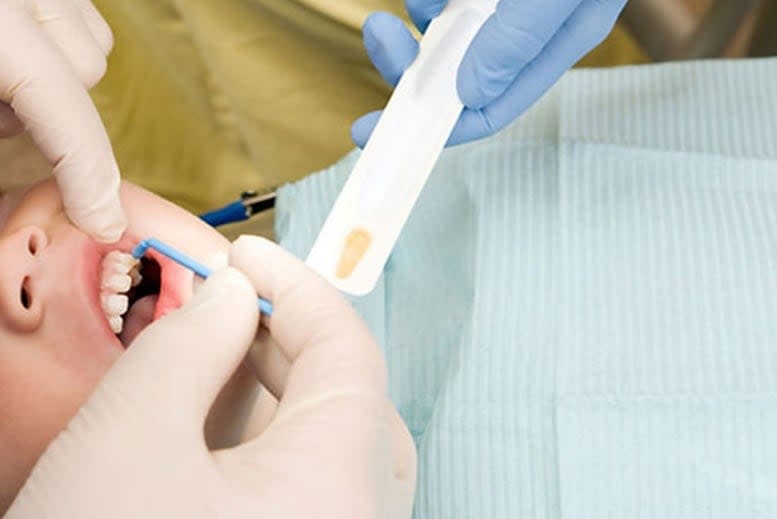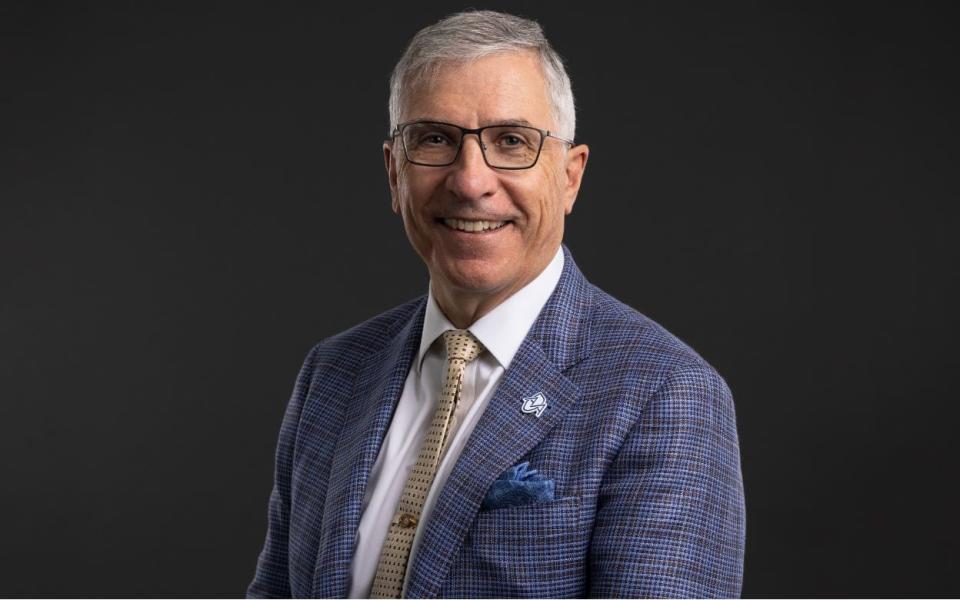Alberta dentists worry new federal plan will add more work, confusion and costs

- Oops!Something went wrong.Please try again later.
- Oops!Something went wrong.Please try again later.
The head of the Alberta Dental Association says dentists have a lot of questions about how the Canadian Dental Care Plan will roll out and how it will affect their workloads and bottom lines — given the existing provincial network of underfunded health benefit programs already available to qualifying Albertans.
The new plan is a $13-billion insurance program that will start covering most basic dentistry costs next year for uninsured Canadians with a household income under $90,000.
Dr. Bruce Yaholnitsky says the profession believes Albertans who struggle financially need this type of assistance to improve both their dental and their overall health.
But he says that with limited details in Monday's announcement, many dentists have been left with more questions than answers — such as whether the plan will replace the handful of existing provincial programs or be one more option.
"It's a bit of a quagmire, let me tell you. It makes my head spin trying to think of co-ordinating all these programs," said Yaholnitsky.
Yaholnitsky says the industry also worries about added administrative work co-ordinating a new system, and what the remuneration will be considering the amount the Alberta government reimburses dentists has been considerably lower than the fee guide for years.
"It's sort of almost philanthropic because we want to help people … but it's not sustainable over the long run," said Yaholnitsky.
Remuneration worries
Each province has its own fee guide for dental services set by the industry.
Because it's only a guide, dentists can adjust their rates higher or lower depending on their overhead costs.
Yaholnitsky says the association is trying to renegotiate a higher rate of reimbursement with the government for its dental health programs.

Dr. Bruce Yaholnitsky, president of the Alberta Dental Association, says his first impression of the new plan is 'it's a bit of a quagmire.' (Submitted by Dr. Bruce Yaholnitsky)
He says dentists currently receive an amount equal to about 48 per cent of the fee guide, yet most offices spend well over that on expenses.
So he says many dentists hope the new fees will align more closely with their fee guide.
"You can't work at a loss, that's not how businesses will run," the Calgary dentist said.
In an email, a spokesperson for Health Canada says it is still working through the operational components of the plan to help finalize the fees and services covered.
They say those details will be shared in early 2024.
A spokesperson for Alberta Health says it's reviewing the federal announcement.
"Alberta urged the federal government to work with the provinces and territories to improve this existing dental coverage for low-income individuals rather than introduce a new program," the spokesperson noted.
Access worries
To qualify for the new plan, applicants must have an annual adjusted family net income under $90,000 and cannot have access to other dental insurance. All eligible applicants will receive a letter inviting them to apply, according to the government's announcement.
But there are varying levels of financial support.
Applicants with household incomes below $70,000 will not have to pay participating dentists, hygienists or denturists — Ottawa will pick up the tab for covered services.
Families with incomes between $70,000 and $79,999 will have 60 per cent of service fees covered by the government. They will have to cover the other 40 per cent out of pocket in what's known as a co-pay.
The executive director of Vibrant Communities Calgary, Meaghon Reid, advocates for strategies to address the root causes of poverty in the city. She says anything that can help reduce costs for families will be helpful, especially in this economy.
"For example, a difference of $145 a month right now is sometimes the difference between people staying housed and not. So anything that can go towards taking all those costs is important," said Reid.
But Reid says access to the program, for a variety of reasons, is her biggest concern right now.
People just need to be able to reach it easily and quickly and not have to jump through a lot of hoops to do that. - Meaghon Reid, Vibrant Communities Calgary
If there are forms to fill out, she wonders if they will they be easy, online and available in different languages.
She says that on top of that there are other considerations for those living in poverty, such as being able to get time off from work, being able to afford to take that time off, and having a ride to get there.
"People just need to be able to reach it easily and quickly and not have to jump through a lot of hoops to do that," said Reid.
Bottom line
Reid also agrees it's important that dentists are remunerated sufficiently for their services so that they sign up to participate in the program.
Yaholnitsky says the level of participation will be key.
"If dentists don't sign up and you're the only dentist in the community, where does that leave you (patients)?" said Yaholnitsky.
Applications are expected to open as early as next week, starting with qualifying seniors over the age of 87. But it will take months before they can start to claim the benefits, say Health Canada officials.
Yaholnitsky says that with the rollout about to begin, the government needs to provide more clarity very soon.
"We're disappointed we came to the table so late in the process because we could have, you know, if we had been there in the summer even or a year ago, we could have had a lot of this worked out."
The program is projected to serve nine million Canadians in its first year.

